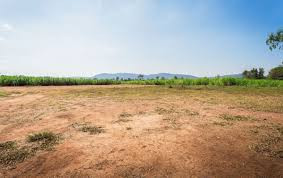
Facts on the ground glaringly show that conventional farming, which involves the industrialised production of crops and livestock, is no longer sustainable nor is it still bankable.
Besides being a major contributor to the current state of soil degradation owing to intensive tilling and heavy dependence on chemicals, conventional farming is keeping the farmers from producing much.
As a result, an industry that should be the backbone of an agrarian country like Zimbabwe, farming has instead become a liability.
Conventional farming has weakened the soils, wasted moisture and resulted in high soil loss and plants have been rendered less drought-tolerant.
This is, among a host of other reasons, why, in spite of the high operational costs, yields under conventional farming continually drop.
Conservative agriculture (CA), which is less industrialised and involves natural means of farming, offers a wide range of advantages.
Besides the low costs, when implemented correctly, this method guarantees higher yields and better crop quality.
- Chamisa under fire over US$120K donation
- Mavhunga puts DeMbare into Chibuku quarterfinals
- Pension funds bet on Cabora Bassa oilfields
- Councils defy govt fire tender directive
Keep Reading
But most importantly, it’s a method that gives the assurance that the land is both ecologically and productively utilised.
With CA, we talk of things like efficient roots, good soil structure, high yields, low costs and resource efficiency; enough to make every serious and environment-conscious farmer want to immediately dump conventional farming methods and take on CA.
CA farmers generally use less chemical inputs than conventional farmers and the quantities would continue to decline over time.
In addition, farmers are required to use traditional crop varieties without the application of herbicides or make use of herbicide tolerant varieties. Diversified crop rotation is used as the main way of controlling pests.
Besides saving the farmers on the expenses that those into conventional farming constantly have to incur purchasing chemicals, CA saves the environment, which has suffered much degradation through chemical application.
Maybe the best reason to take on CA is its affordability factor, something that should appeal to the many small-scale farmers as emphasis is on low-cost tools such as ox-drawn planters and reapers.
It’s a method that has been credited with eliminating power-intensive soil tillage and the labour required by small-scale farmers, those without tractors or cattle of their own would not need to hire tillage.
For those farms that are mechanised, it has been proven to reduce the fuel requirements by 70% and the need for machinery by 50%.
CA not only works with grain crops but can be applied to vegetables and root crops as well, and even perennial crops like fruit, something that should make it appealing to a wider range of farmers.
Most farmers appear wary of adopting CA as they generally believe that such a move would mean less produce for them as most believe the yields one realises are determined by the amount of labour employed, money invested, amount of chemicals applied and more advanced machinery; a very wrong assumption.
CA presents a win-win situation as it not only helps farmers actualise the full potential of the land; they do that at affordable costs and preserve the environment in the process!











